This post may contain affiliate links. Learn more.
Sirloin cap (also called culotte, coulotte, or picanha) is a tender, versatile, and slightly lesser-known cut of beef. It’s a great candidate for our easy reverse sear method, which you can do in the oven or on the grill. Don’t miss it.
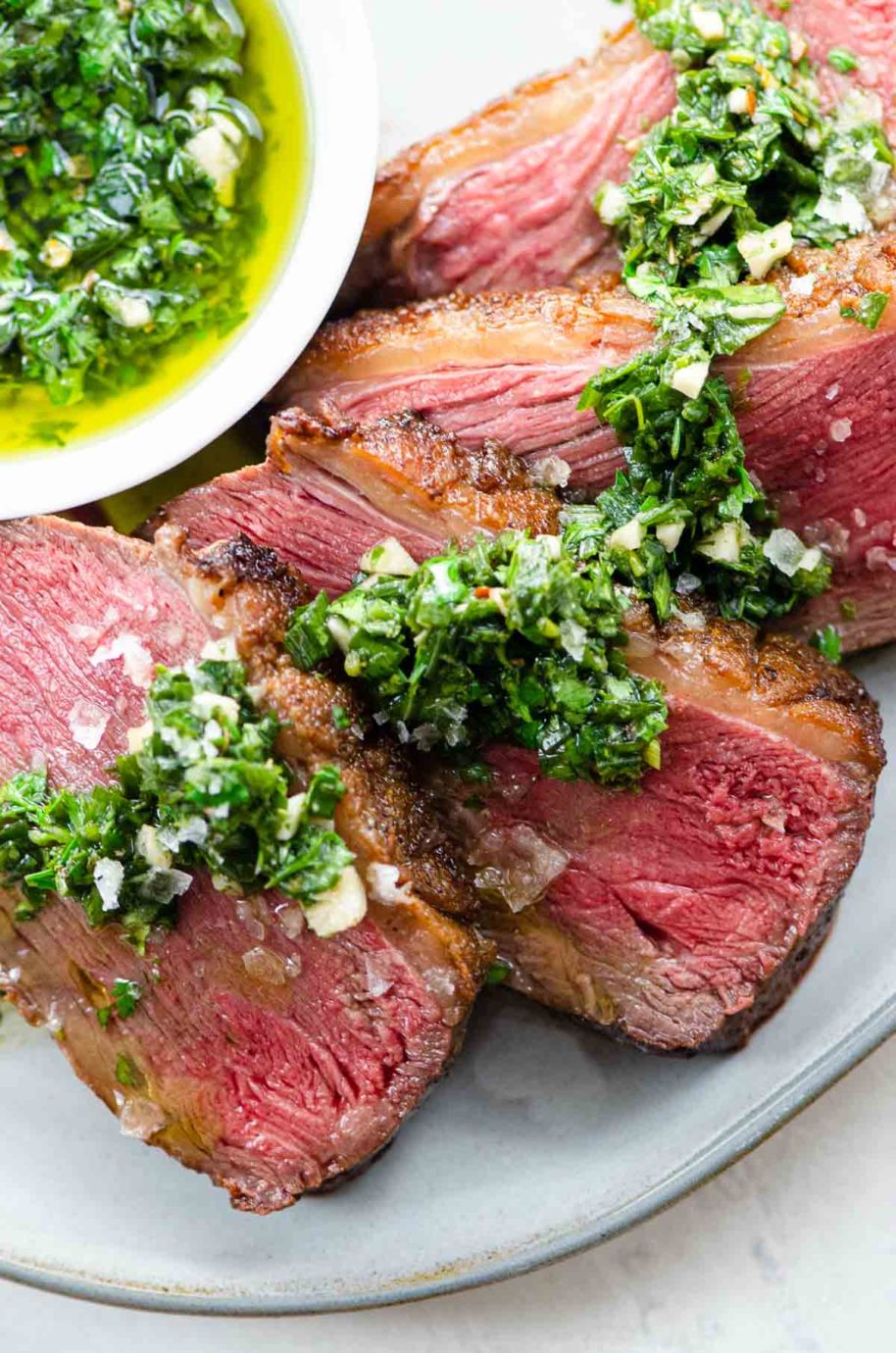
Why we love this recipe
Reverse searing is SUCH a genius technique. (Our reverse sear pork chops have gotten super-popular, in case you’re into that sort of thing.) You cook the meat in a low oven or grill until it’s almost done and then sear the bejeezus out of it briefly to finish. This results in perfectly cooked, tender meat with a gorgeous golden-brown crust.
This fabulous cut of beef is:
- Super-flavorful (known for its bold, beefy flavor)
- A very tender cut
- Amenable to a wide variety of marinades and sauces, but also great on its own
- Quick-cooking
- Great by itself or sliced for sandwiches and salads
- Among the most prized cuts of beef in Brazil, where it’s called picahna and used for churrasco
Ingredients
Here’s what you’ll need to make a great reverse sear sirloin cap. Psst…it ain’t much!
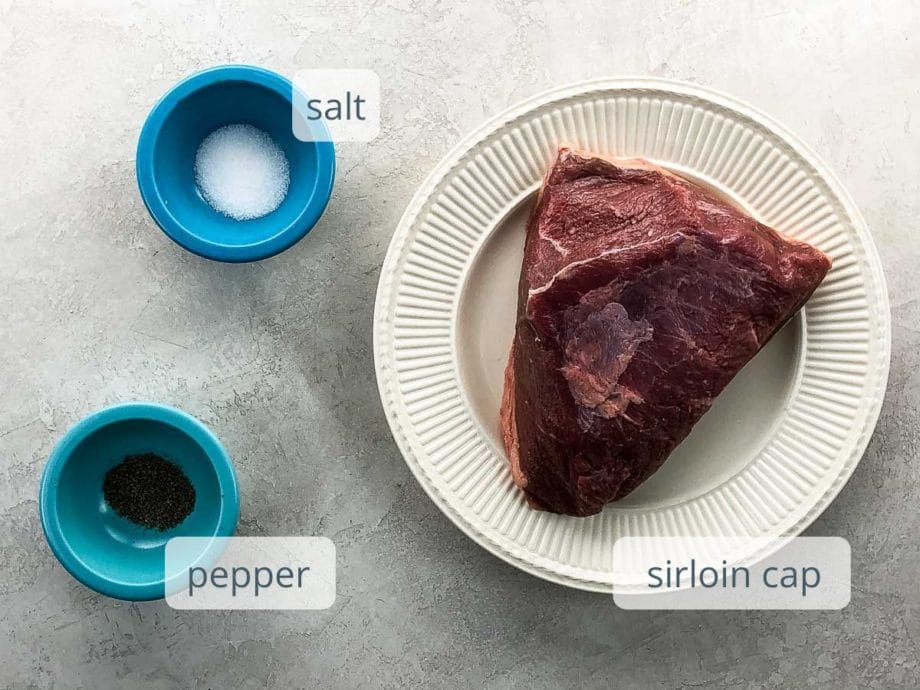
- Sirloin cap (a.k.a. culotte // coulotte // picanha — so ask for any of those at the butcher) can weigh in anywhere between about a pound and two and a half pounds. Buy one or two, depending on size, to serve four to six people. It has a fat cap on one side, which is great for searing. This cut is fabulously tender and is known for its hearty beefy flavor.
My favorite sources for meat & pantry staples
For years, I’ve been sourcing our meat from ButcherBox. We love this curated meat delivery service, which provides grass-finished beef, heritage breed pork, organic chicken, and more from small farms direct to the customer. You can learn more in my extensive Butcher Box review and unboxing.
I love Thrive Market for a wide variety of products. Often described as one part Whole Foods, one part Costco, they’re a membership-based online market for healthier products at discounted prices. Plus, they’re mission-driven, engaged in the community, and not currently owned by a giant corporation. You can learn more in my Thrive Market review and unboxing.
How to make it
Reverse searing this cut of beef really couldn’t be easier. This cut is so tender — and the method is so controllable — that you can relax and enjoy even if you’re not super-experienced cooking meat.
Here’s an overview of what you’ll do. You can see all the steps in action in the video that accompanies this post.
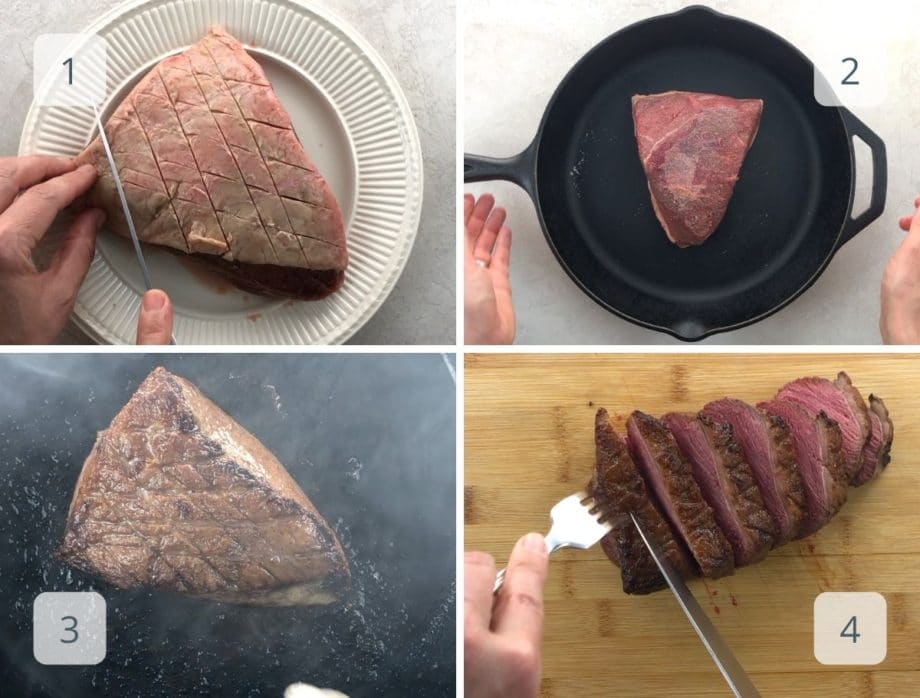
- First you’ll slice a crosshatch pattern into the fat cap. Cut just deep enough to go all the way through the fat, without slicing into the meat. Leaving the fat on helps the meat stay tender. Crosshatching lets the fat cook up crispy without changing the shape of the meat.
- Roast the meat in a low oven (250°F / 121°C) or grill it over low, indirect heat.
- Then get the pan blazing hot and sear it until golden-brown and cooked to your desired final temperature (or grill briefly over direct heat).
- Resting is important to let all the gorgeous juices reabsorb into the meat. Let it sit for 10 minutes, and then slice against the grain.
Why reverse searing works
This cooking method, which works best for thicker cuts of meat, has several advantages. Compared to traditional roasting or grilling, it gives you:
- More even cooking throughout the steak or roast, thanks to the lower oven temperature and longer timeframe
- More tender results, because the meat spends more time in the temperature zone where enzymatic activity helps break down tough muscle fibers
- Better browning, because the low and slow stint in the oven creates a thin, dry layer on the surface that takes well to searing
Expert tips and FAQs
It really is! This is a GREAT cut of meat. It’s tender and super-flavorful on its own but also works well with whatever marinade, rub, and/or sauce you like.
It’s not, exactly. The cap is the triangle-shaped part at the top of the top sirloin, which is a larger cut that sometimes includes the cap and sometimes is sold “capless.” You can see the distinction easily in this great butchering video.
North American butchers tend to divide the cap and include it in other cuts, so you won’t often find it in the grocery store. We get ours from Butcher Box, and you can ask for one at the butcher, too.
Beef has visible muscle fibers that run in one direction. You can see them before and after cooking. To cut against the grain, which results in more tender slices, you want to cut across those muscle fibers rather than parallel to them.
Final internal temperature
As with all beef, the final temperature of your sirloin cap should be:
- 120° to 125ºF / 49° to 52ºC for medium-rare
- 130°F / 50ºC for medium
A note on timing
In the oven
Depending on the size of your sirloin cap and the performance of your oven, it may take longer than the designated time to come up to 105°F (or 115°F for a medium- to medium-well final result). A common mistake is to turn up the oven at this point. Just be patient and leave it in at the prescribed temperature until it reaches 105°F.
On the stovetop
The timing of the final sear will also affect the final temperature. Start by searing the side with the fat cap for several minutes, until nicely browned and rendered. Then flip and sear the other side until the meat reaches your desired final temperature.
How to serve it
This is a super-versatile cut that’s great sliced with or without sauce (like the chimichurri pictured here, or our popular cilantro sauce). It would be great in a sandwich or on a salad, or in tacos or burritos.
In the summer, try it with potato salad and/or esquites and a green salad.
In the winter, serve it over Yukon gold mashed potatoes or mashed cauliflower with smoked gouda.
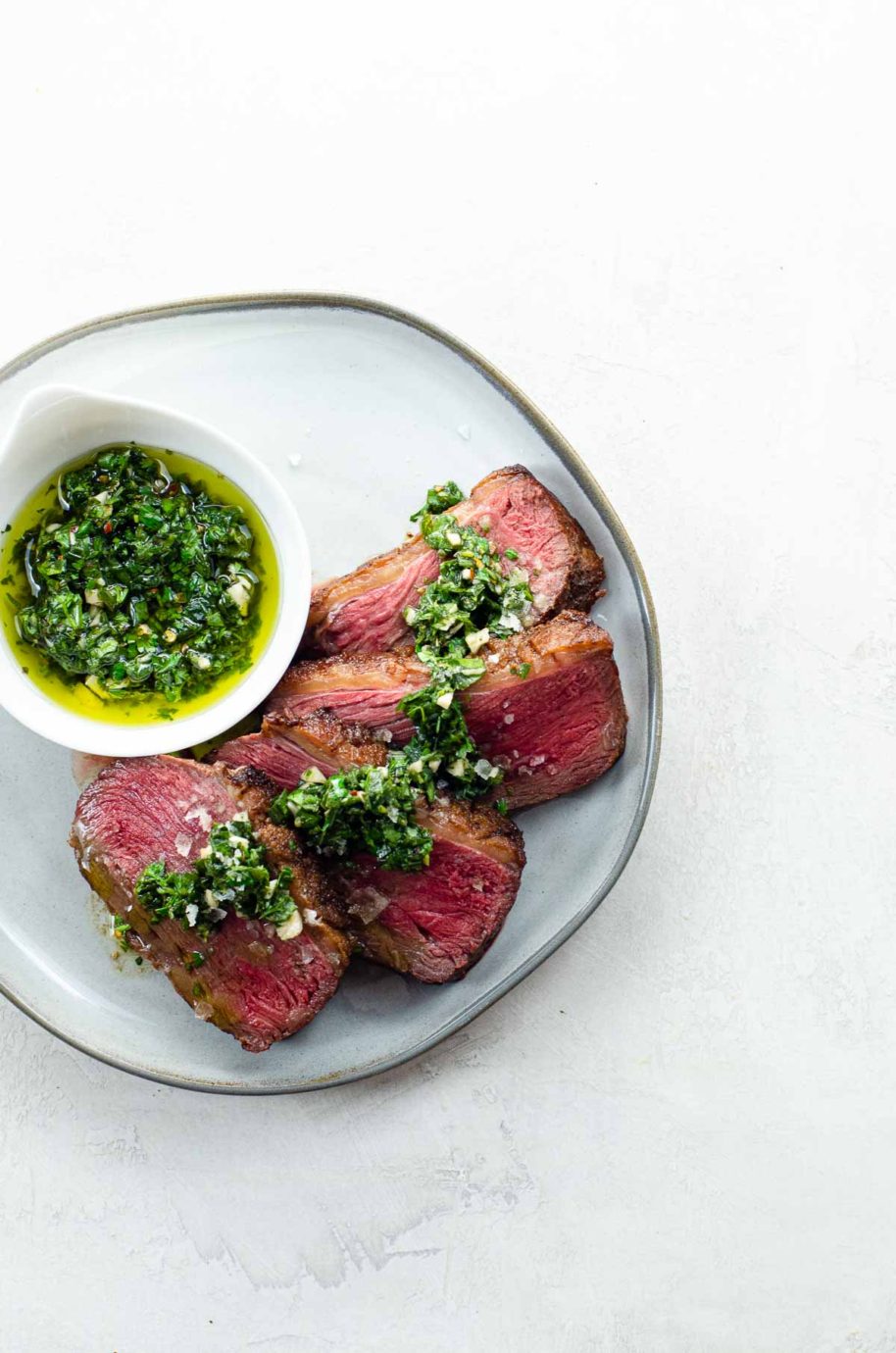
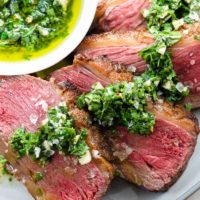
Reverse Sear Sirloin Cap with Chimichurri
Ingredients
- 2 pounds sirloin cap
- 2 teaspoons fine sea salt
- 1 teaspoon freshly ground black pepper
- Chimichurri, to serve
Instructions
- Preheat oven to 250°F (121°C) with a rack in the center.
- Pat sirloin cap dry with paper towels.
- Score the fat in a crosshatch pattern. Make the cuts deep enough to cut through the fat but not through the meat. See video and step-by-step photos in post for visual cues.
- Sprinkle both sides generously with salt and pepper.
- Place meat cut-side down in a cast iron pan.
- Roast for about 30 to 45 minutes, until internal temperature reaches 105°F (41°C) if you'd like the final result to be medium-rare, or 115°F if you'd like the final result to be medium to medium-well. Depending on the size of your sirloin cap, it may take longer. Don't be tempted to turn up the heat — just be patient and cook it until it reaches the prescribed temperature.
- Remove meat from pan and place pan over high heat on stovetop.
- Place meat back in pan and sear for several minutes on the side with the fat cap, until nicely golden brown and rendered. Flip and sear on the other side until the outside is browned and the roast has reached your desired internal temperature — 120° to 125ºF / 49° to 52ºC for medium-rare, or 130°F / 50ºC for medium.
- Rest 10 minutes before slicing against the grain.
- Serve with chimichurri sauce (if you like).
Notes
- We source our sirloin cap from ButcherBox.
- To cook the steak on the grill, use two zones. Cook the steak over indirect heat until it reaches 105°F (41°C), and then sear briefly on all sides over direct heat.
- Be sure to let steak rest for 10 minutes before slicing.
- Slicing against the grain means finding the direction in which the muscle fibers run and cutting across them rather than with them. In the photos and video here I did it wrong! I was lulled into a false sense of security by the cross-hatching on the fat and didn’t pay enough attention. You can see how the muscle fibers run parallel to the slices. Luckily sirloin cap is beautifully tender, and these slices were great anyway. But do as I say, not as I do!
- Sirloin cap is great hot or at room temperature.
- Leftovers will keep tightly sealed in the fridge for up to a week.
- This is a very versatile cut and a simple preparation. Use it on sandwiches or salads, eat it plain, or dress it up with virtually any sauce or compound butter that you like.
Nutrition
Nutrition information is automatically calculated, so should only be used as an approximation.

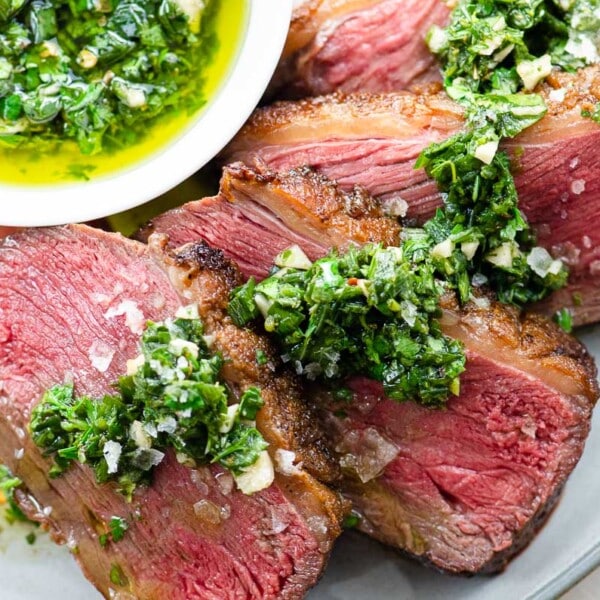
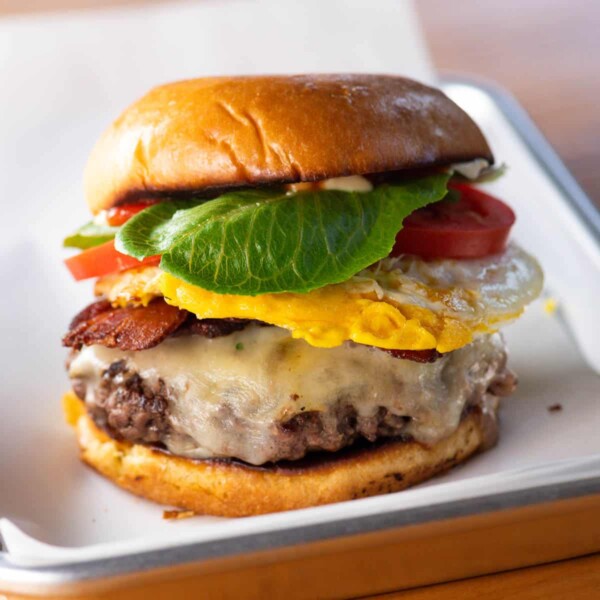
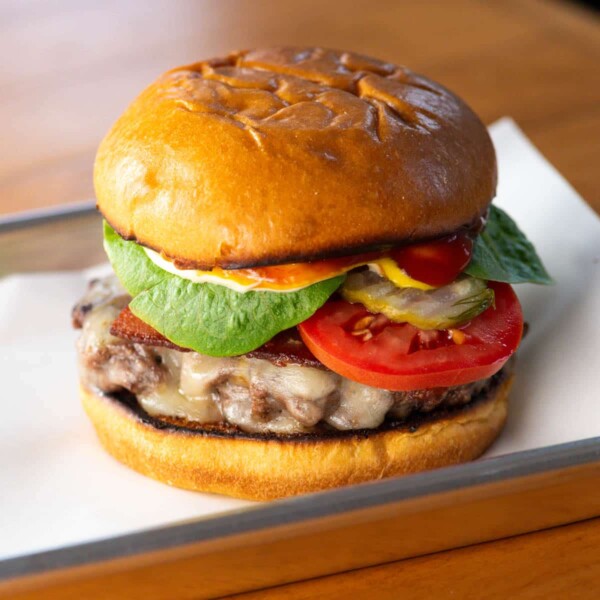
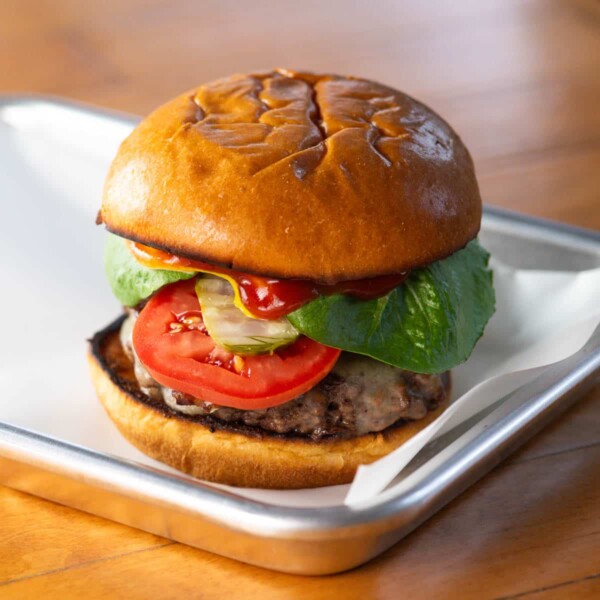
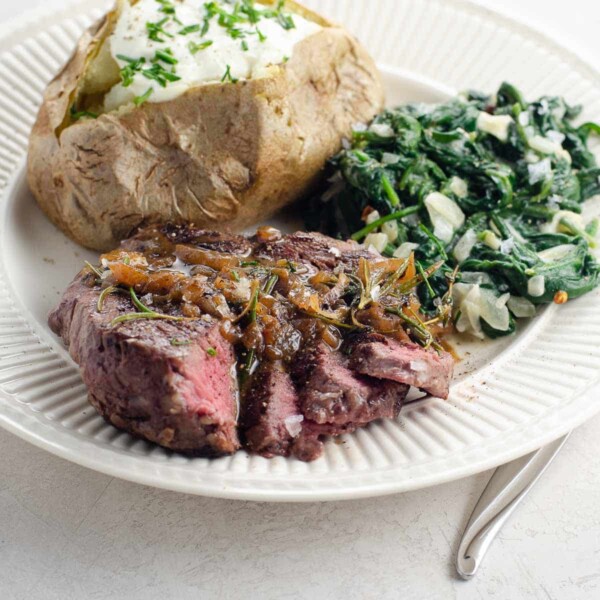







Perfect all three times I made it!
Fabulous, Mary. So glad.